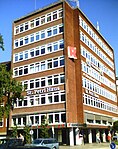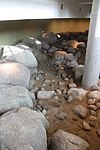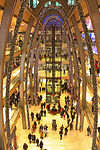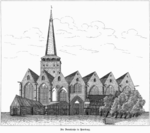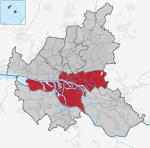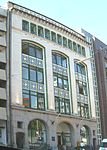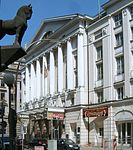Church of Saint Peter, Hamburg
11th-century churches in GermanyBuildings and structures in Hamburg-MitteCommons category link is locally definedGothic hall churches in GermanyLutheran churches converted from Roman Catholicism ... and 2 more
Lutheran churches in HamburgTourist attractions in Hamburg

Saint Peter's Church (German: Hauptkirche St. Petri, German coll.: Petrikirche) in Hamburg, Germany stands on the site of many former cathedrals. Built by order of Pope Leo X, it has been a Protestant cathedral since the Reformation and its congregation forms part of the Evangelical Lutheran Church in Northern Germany.
Excerpt from the Wikipedia article Church of Saint Peter, Hamburg (License: CC BY-SA 3.0, Authors, Images).Church of Saint Peter, Hamburg
Bei der Petrikirche, Hamburg Altstadt
Geographical coordinates (GPS) Address Website External links Nearby Places Show on map
Geographical coordinates (GPS)
| Latitude | Longitude |
|---|---|
| N 53.550278 ° | E 9.996389 ° |
Address
Hauptkirche St. Petri
Bei der Petrikirche 2
20095 Hamburg, Altstadt
Germany
Open on Google Maps
